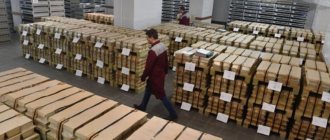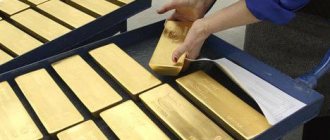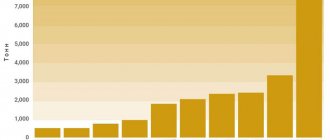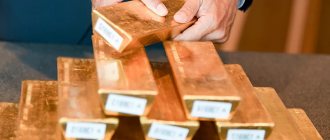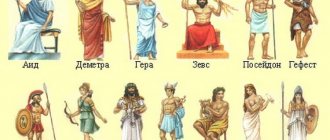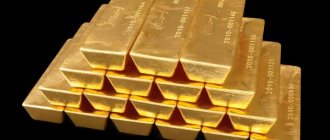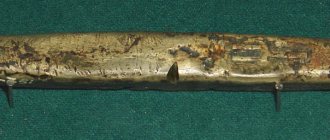Today, the People's Republic of China is the largest producer of pure gold, having held the lead in this industry since 2007. This country ranks second after Russia in gold imports. This creates an interesting situation. On the one hand, China produces at least about 200 tons of gold every year, on the other hand, it is constantly increasing the import of this precious metal.
Therefore, many gold market experts are confident that this state currently has the largest reserves of the main metal currency of our planet. And the answer to the question of where China’s gold reserves are stored, and why this country is in sixth place in the official ranking of gold and foreign exchange reserves, lies behind seven seals of state secret of the Celestial Empire.
Features of Chinese gold and foreign exchange reserves
- From 1950 to 2004, citizens of this country were officially prohibited by law from owning gold in any form. The long-term ban created an unprecedented demand for gold jewelry from private individuals immediately after the abolition of this law.
- In 1977, China's gold reserves did not exceed 400 tons. A powerful boost to accumulation became noticeable in 2010, when gold and foreign exchange reserves almost doubled in one year. What is significant is that it was at this time that the cost of a troy ounce reached its historical maximum. But, despite the high cost of the precious metal, China purchased it in significant quantities.
- All foreign exchange reserves of the country at the beginning of 2021 amounted to 3.2 trillion. US dollars, while gold accounts for a very modest figure of $74.07 billion. The remaining values are currencies and debt obligations of different countries.
- In October 2021, data on gold production and growth in Chinese storage facilities stopped being published by official publications. Since then, the international community has had to be satisfied with the Chinese government's annual report on current gold bullion reserves. And these reports do not inspire confidence in precious metals market analysts and knowledgeable economists.
- Many experts believe that physical gold in this country is stored in numerous banks and jewelry factories, from where it can be claimed by the state at any time.
Gold and foreign exchange reserve: what it is, what it consists of, functions
The state owns various means that contribute to the formation of its status. They are united by the concept of gold and foreign exchange reserves or gold and currency reserves. This is the name given to assets that have a high degree of liquidity. They are of great value not only for the state, whose property is the gold and foreign currency reserves, but also for other countries.
The gold and foreign exchange reserve is one of the main levers of pressure on the processes shaping interstate relations.
On the territory of Russia today a combined structure of gold and foreign exchange reserves is used. The Central Bank of the Russian Federation, the Ministry of Finance, and the Treasury contribute to this. For comparison, other countries use different management and control systems. For example, in the UK the Ministry of Finance is decisive. The Central Bank in this case is the executive body. If we consider Japan, then they also have a combined system that Russia uses. The US gold and currency reserves are formed according to a similar scheme.
Gold and foreign exchange reserves
Gold and foreign exchange reserves are a concept that includes several main areas:
- funds in foreign currency: this can be not only cash (dollars, euros, etc.), but also other means of payment, for example, reserves in correspondent and unallocated metal accounts, securities, deposits, but provided that the maturity date – up to 1 year, and different forms are allowed (gold, loans from high-reliability banks), this also includes debt securities;
- special drawing rights - the concept refers to assets that were issued for circulation by the International Monetary Fund (IMF);
- position in the IMF - a reserve that is located in the IMF and corresponds to the amount of the initial contribution that the country pays upon admission, if there is a need to sell or purchase means of payment of this category;
- monetary gold: this group includes precious metals of high standard (from 995 and above, but more often - 999/1000), it can be gold, platinum or silver, and the form of release of precious products is always the same (coins, bars), this direction is the most popular, directly affects the position of the country’s national currency.
Unverified data on Chinese gold
According to the most conservative estimates, if we add up production and official imports, at least 10 thousand tons of “yellow devil” are hidden in the storage facilities of this country. Until 2010, the main value of government savings was US dollars and US bonds. Apparently, the 2009 crisis dramatically changed the strategy of the Chinese government, which decided to diversify its foreign exchange reserves by investing in the most reliable asset of our civilization.
All import operations in recent years have been carried out through Hong Kong. In 2015, more than 1,300 tons were imported, and if we sum up all imports since 2010, then more than 5 thousand tons of precious metal were imported into the territory of the PRC.
The Celestial Empire completely lacks gold exports. This means that all gold bars, coins and jewelry entering the country or produced on its territory remain at the disposal of Chinese wealthy citizens and the government. The reluctance of the official leadership to share real figures about China's gold reserves is some kind of powerful strategic move based on far-reaching plans.
The concept of gold reserves, how gold and foreign exchange reserves are formed on its basis
First of all, the gold reserve is one of the components of gold and foreign currency reserves. Affects its functions. A gold reserve is a precious metal that is located in the department of the Central Bank or the Ministry of Finance (it is structured differently in different countries). Its cost depends on foreign exchange market quotes. The universal international unit that allows you to keep track of precious metals is the troy ounce.
Gold bars
The share of the country's gold reserves makes up a certain part of the gold and foreign exchange reserves. But it is always different, which depends on the solvency of the state, its status on the world stage and literally on the amount of precious metal. The higher the share of monetary gold, the greater the country’s influence on interstate relations. Typically, gold reserves held in state accounts are replenished in different ways:
- by mining precious metals;
- acquisition method.
What is China's gold reserves for 2021?
Imports of physical gold into this country have increased by 750% since 2010, which is evidence of the following fact. China is actively accumulating physical gold in various forms, pursuing strategic goals unknown to the world. It is clear that the main debtor and economic opponent of this state is the United States of America. However, in order to bring down the American economy of the Celestial Empire, the existing US government debt obligations will be enough.
According to official data, China's gold reserves in 2021 amounted to about 1,860 tons. Every year, approximately 250 tons of gold are mined in this country, the main deposits of which are in mines located in the eastern province of Shandong. In 2016, a record was set - the state announced the production of 453 tons of yellow precious metal. And again, not a word about exports. At the same time, national banks are actively purchasing bars and coins on world markets. According to unverified data, the above figure for the gold and foreign exchange reserves is just a screen covering China’s huge gold reserves.
Large volumes of the precious metal end up in the hands of modern Chinese oligarchs, who, after focusing on a market economy, quickly began to accumulate an impressive amount of capital. The state encourages the accumulation of precious metals among wealthy citizens, which in the event of force majeure can be easily withdrawn by appropriate decrees. According to statistics, 55% of all gold remains in the hands of local rich people, and about 44% ends up in banks and jewelry production. The volume of jewelry gold consumption in this country ranks first in the world. In 2021, China even surpassed India in this indicator, whose population has long been famous for its irrepressible love for gold jewelry.
There are persistent rumors that China's skillfully hidden gold reserves are today the main economic springboard for turning the yuan into the main international means of payment. The bet is on the imminent collapse of the dollar, which is unlikely to be backed by that huge gold reserve of 8.13 thousand tons, which the United States constantly tells the world community about.
Most independent analysts are confident that America has long spent its gold on the arms race, and is now illegally using the precious metal that other countries entrusted to it for storage. And in this situation, China’s “invisible” gold reserves, in the event of a large-scale dollar crisis, can really bring the national currency to the forefront of a renewed world economy.
So how much gold does China really have?
Posted by Matt Insley
It's surprising that no one talks about this.
“Demand from China is strong,” they say. “China will soon overtake India as the world's largest gold consumer,” they add. “Import volumes are growing year after year,” and so on.
But no one in the major media even hints at what the situation really is. China is accumulating gold at a rate never before seen - like modern-day conquistadors. Only today, unlike the era of geographical discoveries, it is more difficult to find traces of ships filled with gold.
But this is a very large purchase. And despite the fact that the major media refuses to cover this story, we will try to establish how much gold China has.
The essence is in Chinese mathematics.
Let's remember that the last "official" statement regarding Chinese gold reserves was made in 2009 and it mentioned 1,054 tons. Compared to the previous statement on the same topic made in 2003, the new results showed an increase of as much as 75%.
Much time has passed since the last official statement and Chinese reserves have undoubtedly increased significantly. When we wrote about this a year ago, we estimated that China's gold reserves totaled 3,300 tons of gold, which is about three times the current "official" reserves.
And today the Middle State has definitely accumulated much more metal. Just look at the dynamics of gold imports into China over the past 12 months...
Buying on declines: import of gold to China from Hong Kong in tons
As you can see from the chart, and if you read Agora Financial you already know this, the volume of gold imports from Hong Kong has risen sharply recently. Last year an absolute record was set.
But that's only part of the story. This morning I decided to add up all imports to production to get a clearer picture of how much gold China actually has.
Since the last official announcement, we should add another 2,873 tons to China's official gold reserves just to account for imports and domestic production. This would bring current “known” reserves to 3,927 tonnes , far greater than those of Germany, the world's second largest owner of gold.
And do you think Germany is alarmed? Yes sir! Where do you think the news came from earlier this year about Germany's audit of gold reserves and the repatriation of some of its gold held outside the country? The essence is in Chinese mathematics!
But that's not all.
When you add up the secret, untraceable sources of gold - black market metal from Africa and South America (and possibly Iran), the volumes of gold mined around the world by Chinese parastatals, and China's campaign to buy gold from its citizens - you see the size of the Chinese hoard. — 7,000 tons or even more!
My calculations say China is sitting on a 7,000 tonne cushion of gold today. Much of it is made up of "secret" purchases that the major media don't dare talk about: secret exports, potential nationalization of citizens' gold, and gold transfers from mining mergers and acquisitions. - and these are just a few of them.
This is how all this can be imagined. The United States is currently tightening sanctions against Iranian oil exports.
The US is making a huge effort to limit the flow of money into Iran, so there are experts inside the US who are also looking at this problem. But even with all the press coverage and government measures, you don't think Iran is actually stopping oil exports?
I don't think so. "Official" export volumes are undoubtedly declining, but huge amounts of Iranian oil are pouring into the market through the back door.
Let's return to our Chinese discussion. There are no sanctions against Chinese gold imports, and no government agencies interfere in Chinese gold policy.
And if Iran can export oil to places we don't want, just imagine what China is doing behind the scenes and the US government isn't even looking at it! The amount of gold flowing into China under the radar from Africa and South America is potentially staggering.
Just name any African country with gold in the ground and I'm sure there are Chinese citizens digging in the ground, or at least setting the stage for black trade deals.
After all, to turn the world gold market upside down, all you need is a small boat. But I will say with confidence that the Chinese do not sail to the golden African countries on small boats, they appear there on container ships. Several at once.
And here is a little story from life...
A few years ago I sold my old car. During the process, various “colorful” people came to see me. They tried to lower the price or offer an “exchange” - my God, whoever you see on the Internet today. But in the end I sold my old, beat-up car for the highest price. And the buyer was happy with the purchase.
After completing the paperwork, I asked him who he bought it for - himself or his family - he said no.
“I’ll send it on a container ship to Africa, there’s a huge market for old cars and it’s one of the most popular models,” he said. I thought I sold my car to a high school student and it would go overseas!
How does this relate to China?
Believe it or not, the developing world wants to develop further. Whether we are talking about old cars or cheap Chinese consumer goods, they are willing to pay (good) and even gold money for imports.
And there is plenty of consumer goods in China - go to your local supermarket.
I write this and shake my head. Just imagine a container ship filled with all sorts of cheap stuff - plastic soccer balls, Barbie-like dolls, tool kits and the like. After unloading off the African coast, this ship certainly does not return to China empty. It is increasingly being filled with local resources that China desires, including GOLD.
So China gets a lot more gold than we think - I'm sure they have thousands of unaccounted for tons of metal. China officially states that they have not added an ounce of gold to their reserves in four years! This is ridiculous. And it is beneficial for those who see where we are heading.
Everything is adding up. China is the world's largest gold miner and gold importer. But its official reserves have not grown in nearly four years.
It's like the nasty guy at the poker game hiding his chips in his lap as he prepares to throw. But unlike poker, the stakes on the global foreign exchange market are much higher.
So do some Chinese math. And by the way, how much gold do YOU have?
Chinese digital currency backed by gold
Whether you interpret all of the events I've talked about here as the result of rampant incompetence or as the result of something more nefarious, the end result is the same. Gold can no longer be contained. Once the Chinese launch their digital currency, which is de facto gold-backed, in February, a new monetary system will begin to take shape. While this may be the death knell for some financial assets, real assets will flourish as poor countries get richer and rich ones fight for their place in the sun.
Let's hope we make the best of this and choose to cooperate with the rising East as the world moves to a new monetary system that no longer clearly benefits the US and other rich countries, but which, if we accept it, could lead to to productive and harmonious times. And stay in the game as an investor - invest in gold and other real assets. This will give you and your descendants the opportunity to make a difference when the current turmoil passes.
Posted by Steven Lieb October 24, 2021 | Translation: Gold Reserve
Functions of countries' gold reserves. How many tons of gold are there in the world
The main task that the gold reserves of states have long been solving is to ensure the value of the national currency. It consists mainly of the volume of Au in the country. Accordingly, negative changes in the currency operating in the territory of a particular state may occur if the reserve of the precious metal has decreased significantly.
There are other functions of the gold reserve:
- adjustment of the cost of various precious metals;
- maintaining the ability to make international payments (Au is a backup means of payment);
- provision of insurance deposits of individuals;
- used as collateral when it is necessary to repay a loan.
Skyrocketing commodity prices
With all this in mind, let's look at the recent performance of the dollar, commodities and gold. From any historical point of view, the situation can be called strange. First, since the beginning of this year, the dollar has been rising along with a sharp rise in overall commodity indices. Such a positive correlation is unheard of even for very short periods of time.
Skyrocketing commodity prices are themselves historic. The fact that they are facing a rising dollar is, in a statistical sense, such a serious anomaly that it would seem that the only explanation is outside intervention.
Even rarer is the inverse correlation between these broad commodity indices and gold, which is down about 4% this year and is the only physical asset lower. Why is this unusual? Because for thousands of years, gold has been a reliable store of value.
Rising commodity prices should come as no surprise. In recent interviews, I have argued that the US and other wealthy Western countries have been extremely short-sighted in focusing on eliminating carbon as the most immediate goal in the transition to renewable energy - short-sighted because this critical transition will require all the energy from all sources that we we can collect.
And now, as expected, we find ourselves in an energy crisis in which the relative scarcity of fossil fuels is pushing up virtually all commodities. Since the start of the year, with the dollar up about 4% (the broadest measure for industrial goods), the CRB Materials Index, which does not include any energy products, has posted a staggering 26% gain, hitting a record high. Raw food prices have increased by more than 30%.
Renewable energy prices have risen as they feel the impact of jumping commodity costs, and at least some alarming chip shortages also reflect our green delusion. Over the past two months, prices for ultra-pure silicon needed to make chips have risen by an incredible 300%.
It is tempting to blame China, which also experienced an energy shock. But while China produces almost all the pure silicon used in solar panels, it produces only about 20% of the even purer silicon needed for chips. A week ago, Norway's Elkem ASA, a major producer of silicon used in electronics, said it could not meet its contractual obligations. This clearly reflects high silicon prices, which are directly linked to energy shortages due to our enormous focus on carbon.
